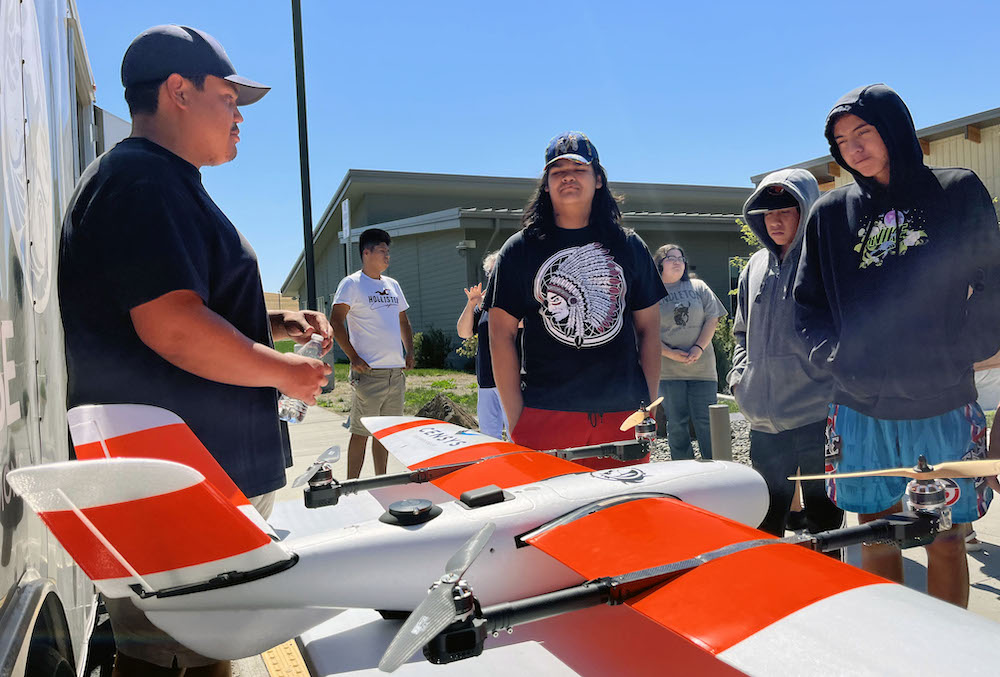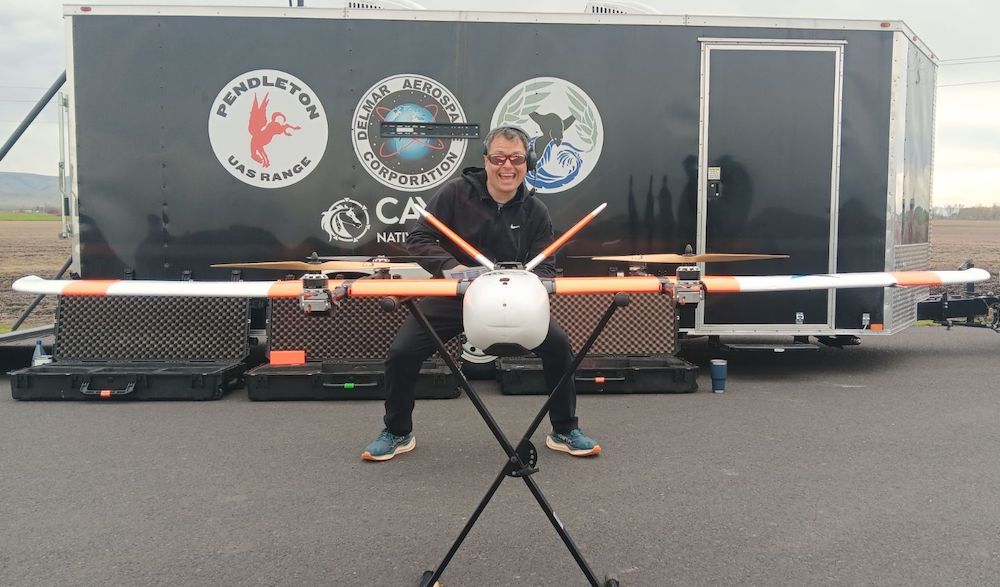
- Details
- By Chez Oxendine
- Economic Development
Talk about a pilot program: the Confederated Tribes of the Umatilla Indian Reservation (CTUIR) is helping to train new drone operators through a state-funded workforce development program.
The program is funded with a $2 million grant from the state of Oregon that was announced in January. It’s administered by the tribe’s economic development company, Cayuse Native Solutions, and Oregon’s Future Ready grant program. Classes are held at Pendleton Airport, which has become a hub for the region’s growing drone industry.
Pilots undergo a training program to become licensed Unmanned Aircraft Systems (UAS) pilots. The grant allows CTUIR and Cayuse Native Solutions to pay for 80 hours of ground school preparation and fundamentals, and then 80 hours of flight instruction. The training is open to tribal community members as well as non-Natives who live in the region.
One such pilot, tribal member Joseph Meuchel, is using the opportunity to launch a new career in photography and thermal imaging. Meuchel discovered a love of flying drones at a friend’s house, he said. When a chance to take a drone piloting class opened up, he jumped for it. Roughly six weeks later, Meuchel had his Federal Aviation Administration license, allowing him to commercially fly drones.
“I immediately got my name in the hat, and I was one of the first four of us that were in a class,” Meuchel said. “I'm looking to get a drone that can do some beautiful video, so I can do aerial shots at wineries, or maybe doing weddings. The opportunities this opened up for me are going to be pretty amazing.”
The state grant will provide $2 million over three years. CTUIR can help tribal members enter an emerging market for drone operators, said CTUIR Workforce Development Director Lindsey X. Watchman.
Watchman said the drone operator program was perhaps the best workforce development tool he’d seen in his career.
“This opportunity is really taking off,” Watchman said. “I’ve been in this field for a long time, and I haven’t seen a program that could hit so quickly.”
In discussing the expanding market for drone pilots, Watchman cited a 2023 report from trade publication Commercial UAV News. That report stated a “vibrant mix” of small and medium-sized drone enterprises could crest a total market value of $12.2 billion by 2030. A second report notes that nearly half of that could be agricultural uses for drones.
That lines up nicely with how many tribes are employing drones, per prior Tribal Business News reporting. Tribes have begun using drones for collecting agricultural data, mapping forests, rivers, and lakes, and finding missing persons.
Drone operating companies also represent another possible federal contracting opportunity — another rapidly growing tribal revenue stream.
 Joseph Meuchel poses with his drone after a CTUIR drone workforce training class. (Photo:Joseph Meuchel)
Joseph Meuchel poses with his drone after a CTUIR drone workforce training class. (Photo:Joseph Meuchel)
As more and more tribes include drones in their business and emergency plans, the demand for drone pilots grows, Watchman said.
“With drones, the applications are immense,” Watchman said. “Our department of natural resources is working with drones from watershed to mountaintop. We’re really learning the value of these drones and having drone operators on standby.”
Then there’s the number of people like trainee Meuchel or even program director Greg Penney who want to start their own business using drones for videography, content creation, and other potential business ideas, Watchman said.
“We have young tribal members who want to create their own businesses,” Watchman said. “I'd love to see them do that. I’m hoping to keep [Penney] on until he finds or starts something that’s better than what I can pay him. He’s the perfect example of who we’re trying to help - a 67-year old tribal member who can now probably go into his own business.”
Penney came on as director through the same grant that funded the rest of the Workforce Ready drone program. He was also a member of the first class that came through the program in February.
The training was rewarding, but difficult, demanding many of the same skills as traditional aviation, Penney said. He studied everything from technical weather reports to finely detailed maps in order to pass his classes and receive his license.
It was worth it for the number of opportunities that were now available, Penney said.
“You really need the same technical skills you would gain as a regular pilot, but the business opportunity is just exponentially growing,” he said. “We’re finding new applications every day that are just more efficient.”
